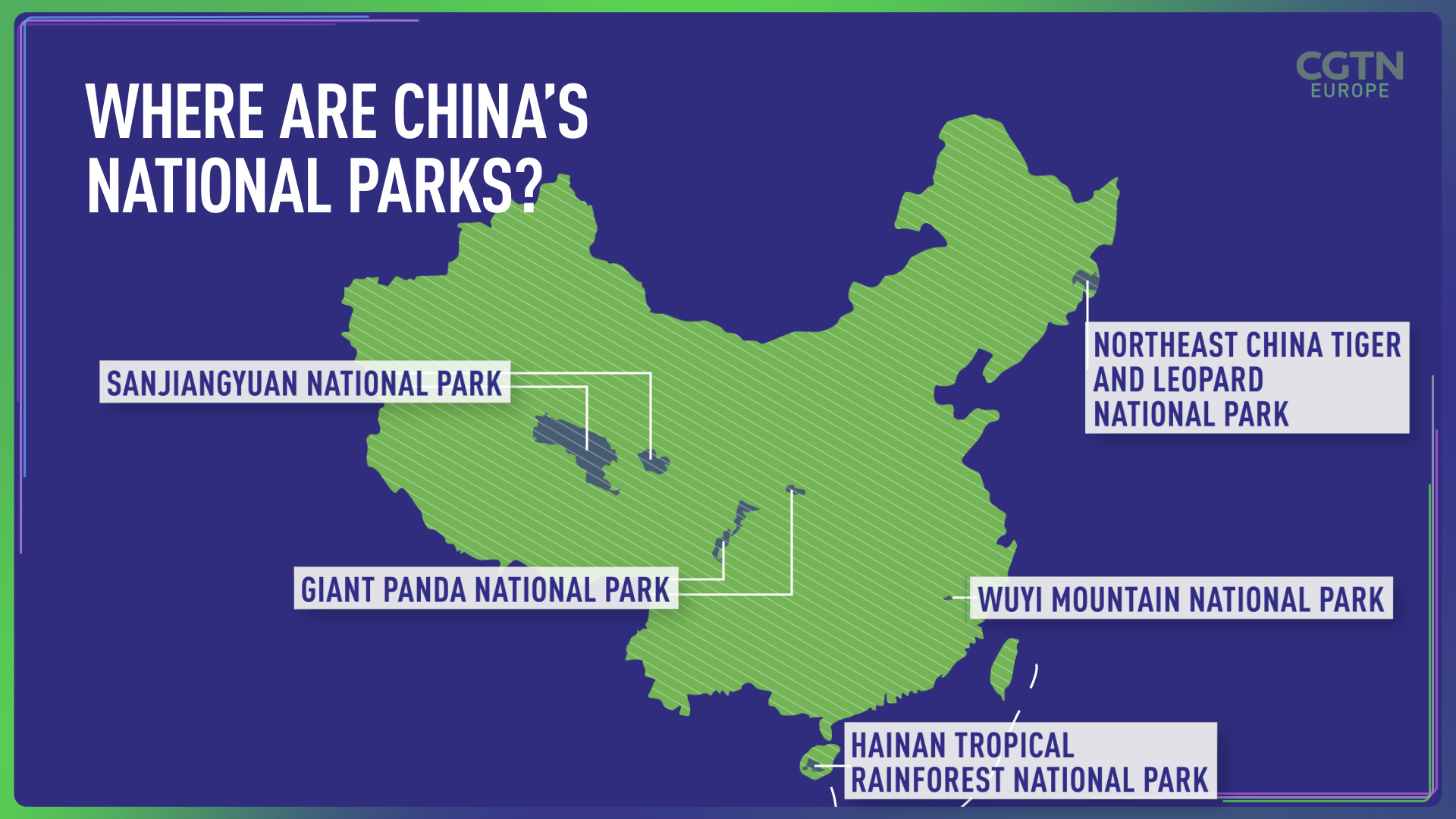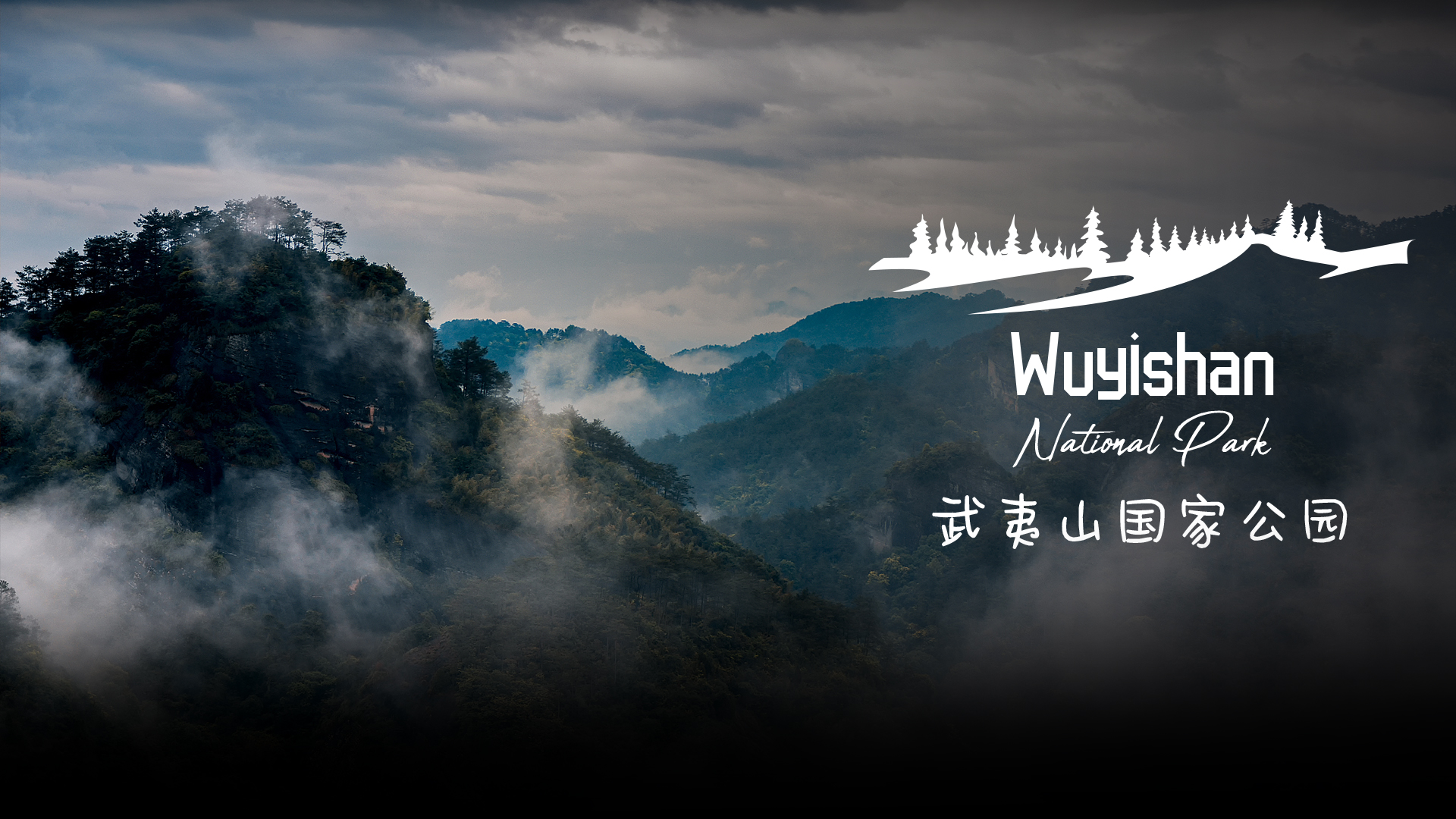02:27

China now has its own national parks!
On October 12 this year, China officially established its first batch of five national parks, covering a total land area of 230,000 square kilometers. The national parks, namely, the Sanjiangyuan National Park, the Giant Panda National Park, the Northeast China Tiger and Leopard National Park, the Hainan Tropical Rainforest National Park, and the Wuyishan National Park, are home to nearly 30 percent of the key terrestrial wildlife species in China.
National parks protect the most important ecosystems and the most unique natural landscapes in China. As the end of the year approaches, CGTN will take you on a visual tour to these five national parks and see the "treasures" inside.

Map of China's five national parks. /CGTN
Map of China's five national parks. /CGTN
Sanjiangyuan National Park
Located on the Qinghai-Tibet Plateau, the Sanjiangyuan National Park is the largest among the five national parks. Home to the headwaters of the Yangtze, Yellow and Lancang rivers, the Sanjiangyuan region is hailed as Asia's water towers that nurture billions of lives.
01:32

Giant Panda National Park
Stretching over Sichuan, Shaanxi and Gansu provinces, the Giant Panda National Park is home to 1,339 wild pandas, 70 percent of the total population in China. In protecting giant pandas, the countless creatures that share a habitat with them also gain a better living environment.
01:41

Northeast China Tiger and Leopard National Park
The Siberian tiger and the Amur leopard are endangered species under global protection. In the Northeast China Tiger and Leopard National Park, there are at least 27 Siberian tigers and 42 Amur leopards. The park has teamed up with a Russian national park in protecting these big cats.
01:26

Hainan Tropical Rainforest National Park
The Hainan Tropical Rainforest National Park only occupies one-seventh of the land area of the island province of Hainan. But it is home to about 20 percent of China's amphibian species,33 percent of reptile species, 38.6 percent of bird species, and 20 percent of mammal species. It is also the only habitat of Hainan gibbons, a rare primate worldwide. Its population has recovered to five groups, with a total of 35 individuals in 2021.
01:17

Wuyishan National Park
For the past one hundred years, biologists from China and abroad have discovered more than 1,000 new species in the Wuyi mountains. The Wuyishan National Park is the only park in China listed as a United Nations Educational, Scientific and Cultural Organization (UNESCO) cultural and natural heritage site. It is known as the "kingdom of snakes," "the world of insects," and "the paradise of birds."
01:10

(Cover image designed by CGTN's Li Yueyun. Video edited by CGTN's Zhao Ying.)
(If you want to contribute and have specific expertise, please contact us at nature@cgtn.com.)

